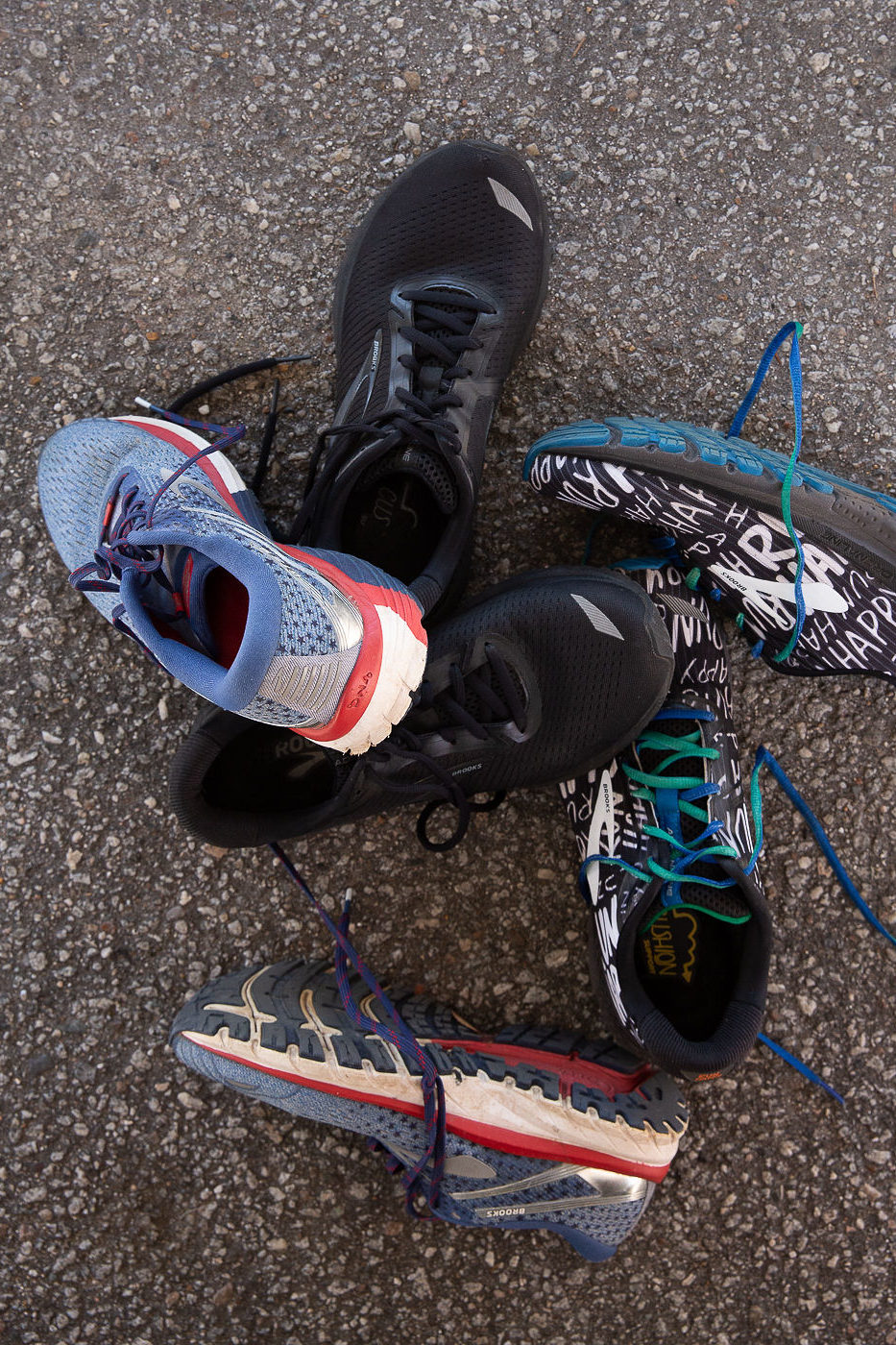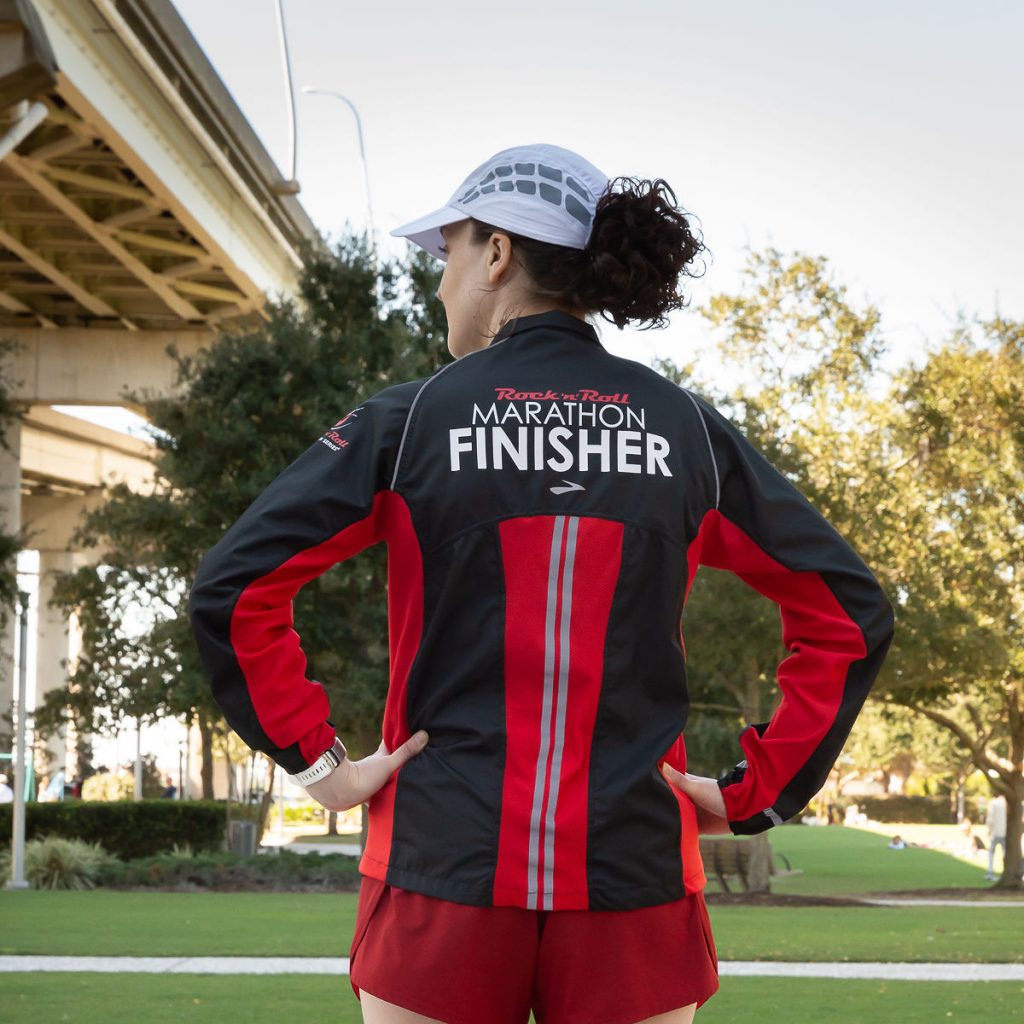My next marathon, The Jack and Jill Downhill Marathon is about 20 weeks out and training has started! Whenever a new round of training starts, I can’t help but think back to my first marathon in 2013. Oh the things I didn’t understand then. This got me thinking that really, a “marathon training guide” isn’t just one post, or one article. It should be a series of things that you can dive into. So, while I’m training I’ll bring you along for the ride with all the goods.

Part 1: Where to begin?
First things first, if you’re not quite sure or you haven’t signed up for a race yet, check out my tough questions post here. If you’re still with me let’s get started.
Choose a Plan
Running a marathon requires planning. Before getting started you’ll need to pick the right marathon training plan to make sure you are running enough miles, while not increasing too quickly. Most plans are 15-20 weeks and the mileage will vary depending on your experience and goals.
If you’re a complete beginner and have never done a marathon before, pick a plan that gets you across the finish line. Don’t focus on a specific time goal. After all, any time will be a PR! One trap a lot of first timers fall into, is expecting that a marathon will just be double your best half marathon time but that’s not quite how it works. Madame Marathon is entirely her own game.
There are countless free plans as well as paid plans out there. Jeff Galloway, Hal Higdon, Runners World just to name a few great resources for beginners and pros alike. For those running their second (and beyond) race and want to kick things up a bit you can find intermediate or even advanced plans, all depending on your goals.
Coaching
If you don’t feel like you can confidently choose a plan on your own or if, like me, you want to take your running to the next level you might consider getting a coach. Coaching comes in a variety of levels and price points. You can find coaches willing to create a plan for you once and you’re on your own, all the way up to a coach who checks in with you daily.
Run4Prs is a great coaching option, and what I currently use. They offer personalized coaching plans at a variety of levels and are reasonably priced. I personally do the basics with a custom plan and occasional email support. It’s unlocked potential in me I didn’t know I had. Plus, someone tells you when and how far to run, so you don’t have to think about it. 🙂
Strength Training
When focusing on a marathon, it’s easy to stick to logging the miles and forget about strength training but it’s a key part of the equation to make you stronger and help avoid injury. For instance, most of us don’t think about how having weak abs effects other parts of the body, like our hips and glutes. Ahh, so ab exercises now make sense for running!
A good strength training routine is a must, but keep in mind running is still your main focus while in training. I like to strength train twice a week, and avoid things like the dreaded leg day right before a long run. I also tend to avoid a lot of plyo and jumping but that’s personal preference and knowing that my feet and knees tend to need more TLC during training time (no this is not because running ruins your knees).
Gear
If you’ve read my tough marathon questions mentioned at the beginning, then you’ll already know to prepare to spend some money on gear to have the best marathon experience. Start with making sure you have a solid pair of shoes, maybe two to rotate during the week. If you need some guidance on choosing shoes, check out my guide. You’ll also want those babies plenty broken in by race day.

You can ease into your “race outfit” once you get into training and learn what gear rubs you in the wrong places, what the weather will be like, and anything else you learn along the way. Just make sure you run in whatever you plan to run in on race day on at least one long run before hand. You don’t want any surprises.
Stay tuned for part two, where we’ll talk fuel, recovery, and more!

